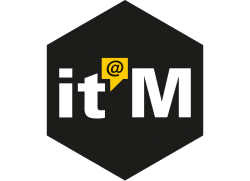Design Philosophy
- vuetify:
Vuetify is built around the Material Design specification, offering a comprehensive and consistent design language across all components. It emphasizes accessibility, responsiveness, and customization, making it suitable for a wide range of applications.
- quasar:
Quasar embraces a versatile design philosophy that supports multiple platforms, including web, mobile, and desktop. It allows developers to create responsive applications with a single codebase, offering both Material Design and iOS-style components.
- element-ui:
Element UI follows a clean and modern design philosophy, focusing on simplicity and usability. It is designed primarily for desktop applications, making it ideal for enterprise software and admin dashboards.
- vue-material:
Vue Material is inspired by Google’s Material Design guidelines, providing a lightweight and minimalistic approach to UI components. It aims to deliver a simple yet elegant design without excessive complexity.
Component Variety
- vuetify:
Vuetify boasts a vast library of components that fully implement Material Design. It includes a wide range of UI elements, layouts, and specialized components, making it one of the most feature-rich libraries available.
- quasar:
Quasar provides an extensive collection of components that cater to web, mobile, and desktop applications. It includes everything from basic UI elements to advanced components like carousels, dialogs, and tree views, making it one of the most versatile libraries.
- element-ui:
Element UI offers a wide range of components, including form controls, navigation elements, and data display components. While it is comprehensive, it is more focused on desktop-oriented components.
- vue-material:
Vue Material offers a limited set of components compared to the other libraries, but it covers the essentials for building Material Design-inspired interfaces. It is best suited for projects that do not require a large variety of components.
Customization
- vuetify:
Vuetify provides a highly customizable framework with a robust theming system, support for CSS variables, and the ability to create custom components. It is designed to be flexible while adhering to Material Design guidelines.
- quasar:
Quasar offers extensive customization options, including a powerful theming system, CSS variables, and the ability to create responsive designs. It also supports dynamic theming, allowing for real-time style changes.
- element-ui:
Element UI allows for customization through its theming system, which enables developers to modify styles and create custom themes. However, deep customization may require additional CSS work.
- vue-material:
Vue Material provides basic customization capabilities, but it is limited compared to the other libraries. It encourages the use of CSS for further styling and customization.
Accessibility
- vuetify:
Vuetify is one of the most accessible Vue UI libraries, with a strong focus on compliance with WCAG (Web Content Accessibility Guidelines). It provides detailed documentation on accessibility features and best practices.
- quasar:
Quasar places a strong emphasis on accessibility, ensuring that all components are keyboard navigable and support ARIA attributes. The framework is built to be inclusive and compliant with accessibility standards.
- element-ui:
Element UI is designed with accessibility in mind, providing ARIA attributes and keyboard navigation support for its components. However, the level of accessibility may vary across different components.
- vue-material:
Vue Material aims to be accessible by following Material Design guidelines, but it may not be as comprehensive in terms of accessibility features compared to the other libraries.
Ease of Use: Code Examples
- vuetify:
Vuetify offers extensive documentation, a rich set of examples, and a well-designed API, making it easy for developers to understand and use its components. The library also includes a visual component designer, which can help streamline the development process.
- quasar:
Quasar is designed to be developer-friendly, with comprehensive documentation, a CLI tool, and a supportive community. Its flexibility and extensive feature set may require some time to fully master, but the learning resources provided are excellent.
- element-ui:
Element UI is known for its straightforward API and well-structured documentation, making it easy for developers to integrate and use its components. The library provides clear examples and guidelines for each component, which helps reduce the learning curve.
- vue-material:
Vue Material is lightweight and easy to use, with a simple API that aligns well with Vue.js conventions. Its documentation is clear, but the limited number of components may require developers to implement additional functionality themselves.















